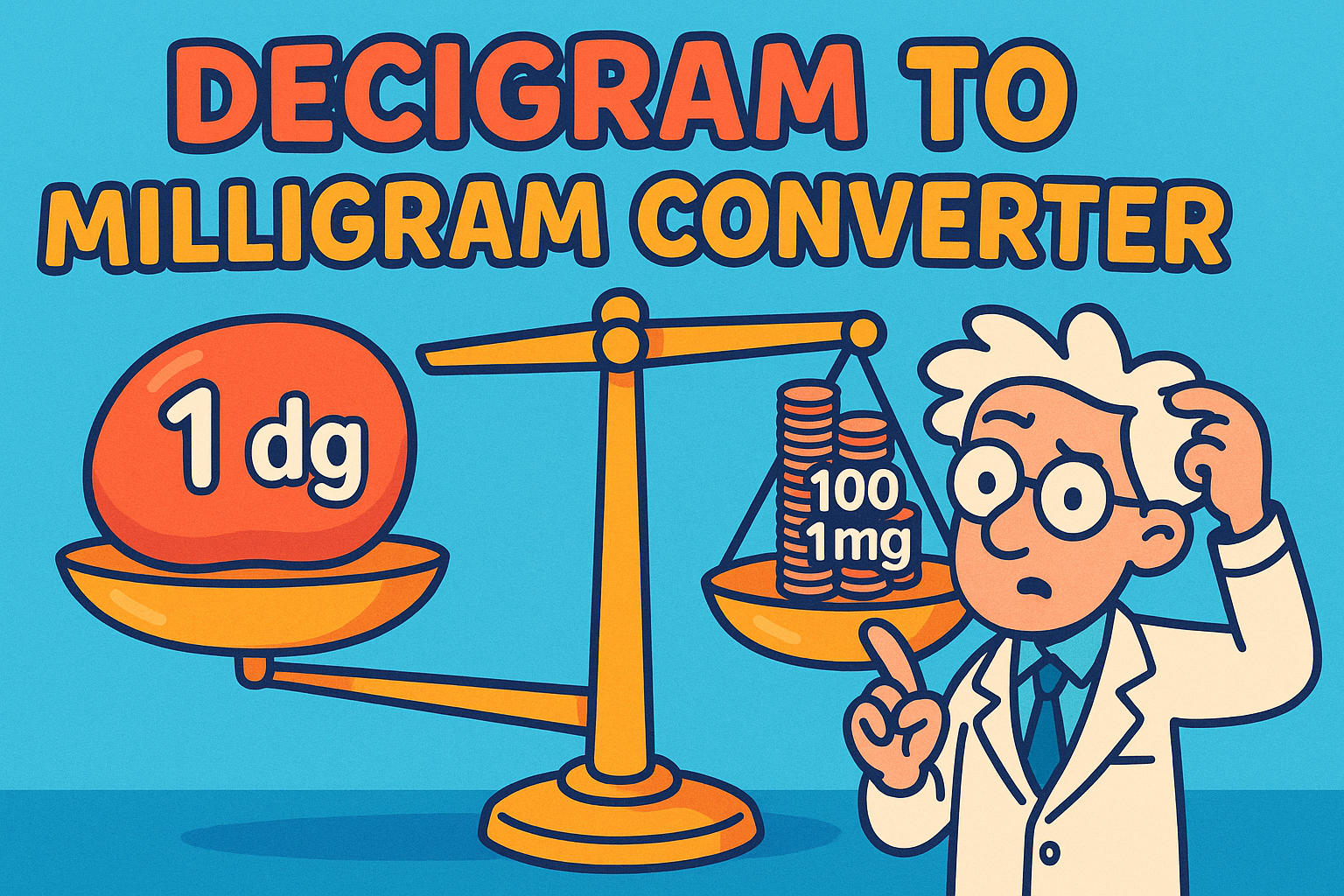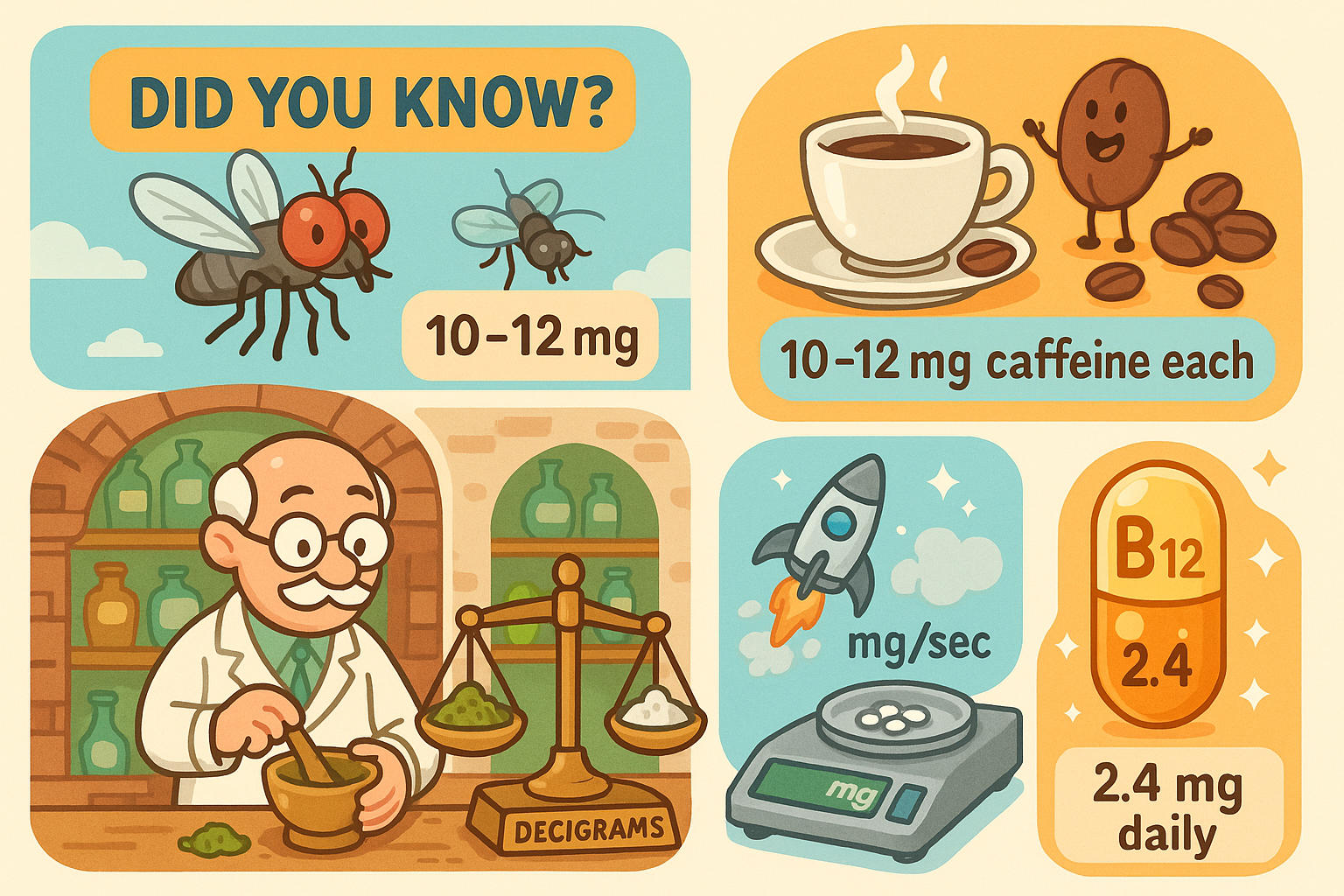decigram to milligram – How to convert dg to mg
In science, healthcare, food production, and education, precision matters. Knowing how to convert decigram to milligram (dg to mg) is a foundational skill that ensures accuracy when working with small quantities. Whether you're a pharmacist, a food scientist, or a student in the lab, this conversion is simple—but vital.
Use our Conversion Tool to convert dg to mg instantly, without the risk of error.
Decigrams and Milligrams - What do you need?
A decigram (dg) is a metric unit of mass equal to 0.1 grams or 100 milligrams.
The prefix “deci-” means “one-tenth,” placing the decigram just below the gram on the metric scale.
Though it's not as common in everyday conversations, it’s still used in pharmacology, product formulation, and academic science, especially when values fall between typical mg and g measurements.
A milligram (mg) is a much smaller unit—1/1,000 of a gram. Milligrams are standard in medical prescriptions, chemical solutions, dietary supplements, and lab work. Because of their tiny scale, mg-level precision is necessary in situations where overdosing or underdosing could cause serious harm.
Need help converting between even more metric weights? Try our full Weight Converter to explore grams, kilograms, micrograms, and beyond.

How to Convert dg to mg
In the metric system, each step is based on powers of 10—making conversions quick and consistent.
1 decigram = 100 milligrams
Example:
If you’re working with 3.5 decigrams, multiply by 100:
3.5 × 100 = 350 mg
Simple, right? But when small values really matter, you’ll want the precision of our Conversion Tool to double-check your work.
Need to scale things further? Try Milligram to Microgram to zoom in even further on your measurements.
Did you know?
-
A decigram was once a standard unit in European pharmacies for compounding powders and herbal extracts before the milligram became the modern default.
-
Just 1 milligram of LSD can contain 10–20 full human doses—making mg-level measurements essential in toxicology and drug safety research.
-
The average coffee bean contains around 10–12 mg of caffeine, so an espresso shot typically delivers 60–100 mg, depending on bean and brew style.
-
NASA uses milligrams per second as a measurement for precise spacecraft thruster burns, where each mg of propellant adjusts positioning in orbit.
-
A housefly weighs about 10–12 milligrams, making it one of nature’s most relatable references for this unit of mass.
-
The daily recommended dose of Vitamin B12 for adults is just 2.4 mg—and a deficiency at this tiny scale can affect the nervous system over time.

A Labeling Error That Brewed Trouble
In 2020, a wellness brand in California launched a new energy powder line and intended to list the active ingredient—green tea extract—as 200 milligrams per serving. However, due to a miscommunication between formulation and packaging teams, the label went to print stating 200 decigrams per serving—an accidental 20x increase.
Customers noticed jittery side effects and flagged it to customer service. The company had to pull the product, redesign packaging, and issue refunds—a $30,000 hit in production costs and lost revenue.
It was a painful lesson in the power of a tiny unit. Today, their team uses Jetcalculator's Conversion Tool to ensure conversions are clear and consistent before anything goes to market.
Conclusion
Converting from decigram to milligram (dg to mg) may seem simple, but when precision counts—in science, medicine, or manufacturing—there’s no room for assumption. One decigram equals 100 milligrams, but that zero can make or break a dose, a recipe, or a product line.
Jetcalculator helps you keep things accurate, fast, and foolproof. Browse the full Unit Conversion system to explore other key mass relationships.

